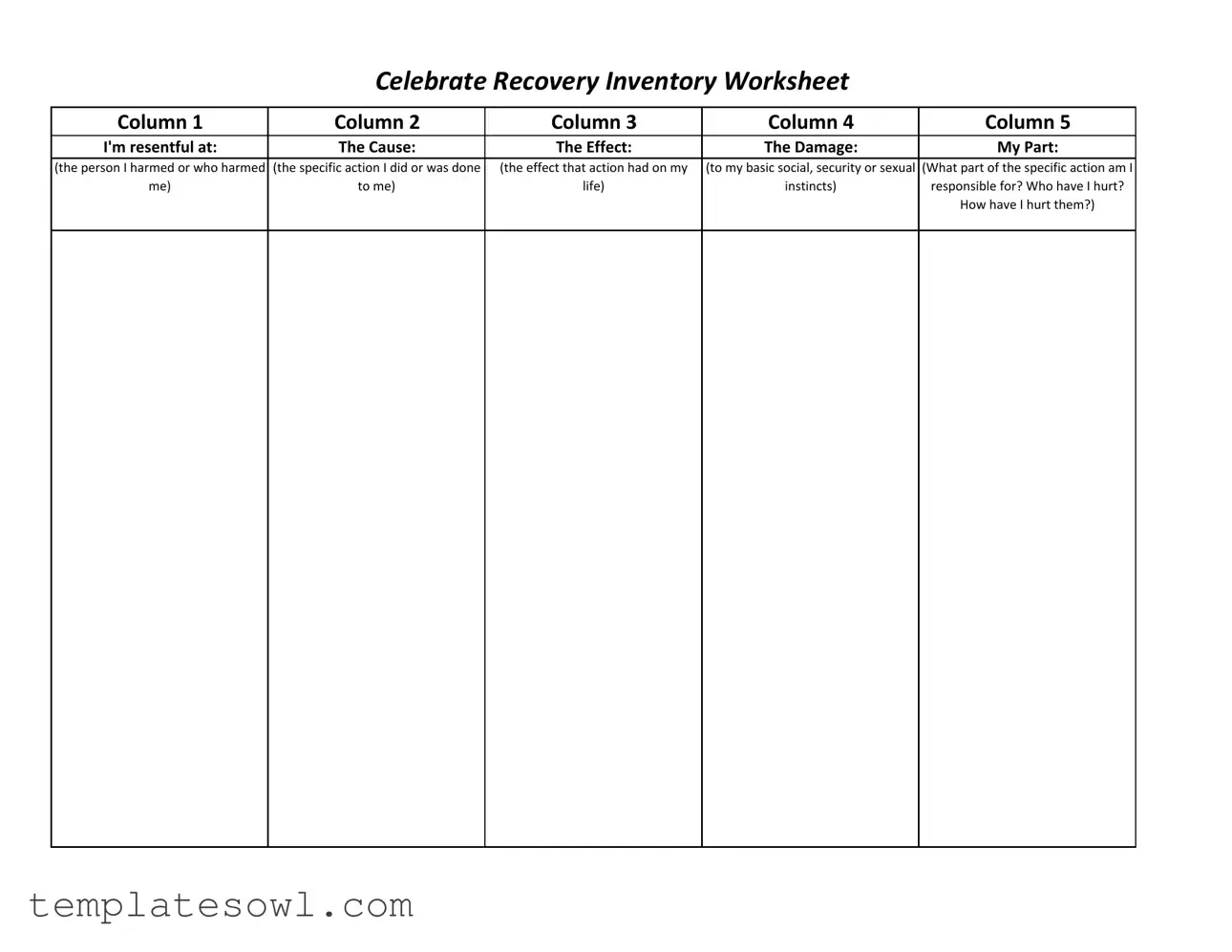What is the Celebrate Recovery form?
The Celebrate Recovery form is a tool designed to help individuals reflect on their emotions, actions, and relationships. It provides a structured framework to identify resentments, their causes, and how they impact one’s life. This form is part of the Celebrate Recovery program, which aims to support personal growth and healing through accountability and understanding.
How do I use the Celebrate Recovery form effectively?
Begin by filling out each column of the form. Start with Column 1, where you note what you’re resentful about. In Column 2, identify the cause of that resentment. Then, in Column 3, describe the effect it has had on you. Column 4 focuses on the damage caused, while Column 5 asks for your part in the situation. Take your time with each section; deep reflection is essential for meaningful insights.
Who can benefit from using the Celebrate Recovery form?
This form is beneficial for anyone participating in the Celebrate Recovery program. It is particularly helpful for individuals dealing with personal struggles such as addiction, relational issues, or emotional challenges. By using the form, participants can gain clarity on their feelings and take steps toward recovery and healing.
Why is it important to identify my part in a situation?
Identifying your part in a situation promotes accountability. It encourages personal growth and learning from past actions. Understanding how you've contributed to a conflict or resentment helps you focus on what you can change about your behavior moving forward, ultimately leading to healthier relationships and personal peace.
What should I do if I feel overwhelmed by the process?
If you feel overwhelmed, it’s okay to pause. Break down the task into smaller sections, and tackle one column at a time. Consider discussing your feelings with a trusted friend or a recovery group member who can provide support. Remember, this is a personal journey and it’s vital to go at your own pace.
Can I use the Celebrate Recovery form more than once?
Yes, you can use the Celebrate Recovery form as often as needed. It can be beneficial to revisit it after significant life events or personal struggles. Periodic reflection can help track progress in your recovery journey and identify new areas for growth.
Is the Celebrate Recovery form confidential?
Yes, the information shared in the Celebrate Recovery form is intended to be confidential. It is meant for personal reflection and is typically discussed in a safe environment within recovery groups. Always check with your group about their privacy policies to ensure your comfort.
Can I share my completed form with others?
You can choose to share your completed form with others, but that decision is entirely up to you. Sharing can foster deeper discussions, connection, and accountability, but it’s important to feel safe and comfortable if you decide to do so. Always respect the privacy of other participants in a group setting.
Where can I get the Celebrate Recovery form?
You can typically get the Celebrate Recovery form from your local Celebrate Recovery group or through its official website. Some organizations also provide digital copies, making it easy to print and fill out at your convenience.
